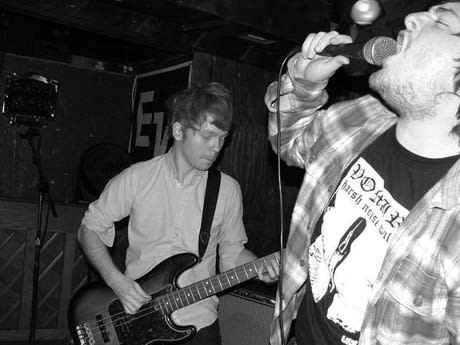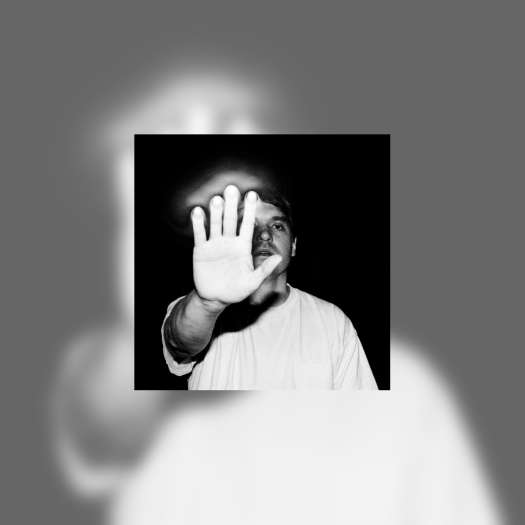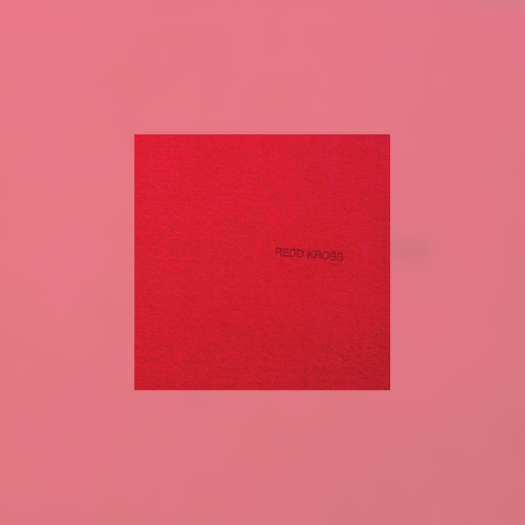Total Abuse are just what their name suggests: a savage, cruel, violent experience. Originally from Austin, TX, this five-piece take the foundation of hardcore and beat it into a bloody pulp. Through a vast palette of influences, the band have developed one of the rawest sounds imaginable. Having played with the likes of pot stirrers like Fucked Up and Monotonix, the band have earned a reputation as a blistering live act. As far as recordings go, their live experience can be felt on their self-titled LP, which was released by Deranged Records earlier this year. With a new EP called Mutt set for release later in the year via Dean from No Age's PPM label, the band took some time out of their current tour to explain themselves.
What made you decide to release your album as a compilation?
Rusty Kelley: The vinyl version contains only the LP. The CD contains exclusive demo and seven-inch tracks as well. We just wanted some kind of collection for those who wanted all the material in one format.
Total Abuse seem influenced by any number of genres and bands, but the band's sound is still a unique one: very depraved, irate, demented. How did you come around to developing that sound?
Rusty: I think we all came together loving that early '80s hardcore sound. But each of us individually was interested in different styles of music. I was pretty obsessed with UK power electronics like Whitehouse, Ramleh and Sutcliffe Jugend. Matt was very into early post-punk and no wave etc. I think our style developed from there.
Matt Lyons: I think I can speak for everyone by saying that we have no interest in riding on any sort of nostalgia for a movement dead and gone. We just want to create something that reflects our influences without sounding like some other band. I'm more into Mars and Blue Cheer than a band like the Cro-Mags.
Ryan Foster: I would say Flipper, DC hardcore bands, and Nirvana are my influences as far as guitar playing goes. Mainly I want to press down on the strings and hopefully play one note.
Duncan Knappen: I'd attribute a lot of the more recent developments in TA to the irregularity with which it is written. Being that we live in different areas, we write music in short bursts and single sessions. There is a certain kind of pressure to work when we actually get the chance to, which we seem to thrive on in some respects. Influences and interests seem to be constantly shifting and changing. It can be frustrating at times but I feel like we don't really get an opportunity to get too stale or repetitive.
Was the objective to find a sound that matches the band's name? Which one came first?
Rusty: The band was first. The name seemed to match. The Sotos book it's named after is a collection of his early zines and writing. Some of his most raw and base material... the style of music we were developing seemed to match the material in the collection.
The lyrics are very confrontational. Where does the inspiration come from when you're writing them?
Rusty: I think early on the lyrics were anti-social and hate filled. By the time the Sex Pig seven-inch came out, I think everything shifted inward. They were still confrontational, but I think more focused on the self. Understanding one's own faults but also feeling as though they can never be changed. With the new EP, Mutt, there is somewhat of a recurring theme regarding the parasitic nature of sex. The song "Mutt" is written as a dialogue, each side referring to the other as a "mutt" over and over again with no other words used. One view of the lyrics are the john and the whore using the other in a very different, but similar kind of way, but also being totally unable to exist without the other. I am definitely inspired by Peter Sotos, Andrea Dworkin, De Sade, William Bennett, Kevin Tomkins, Dennis Cooper and Pierre Guyotat in terms of writing.
The artwork for your records is very graphic and unapologetic. Is it important for you to use strong imagery to present the music?
Rusty: Material is not chosen at random by any means. The imagery is graphic but I feel reflects our chosen aesthetic well.
Duncan: It seems that most bands today seem to rely on "joke" imagery, which I think we all find unbelievably dull. The visual aesthetic of Total Abuse means something different to each of us, I'd imagine, as it is rarely discussed. It seems best understood in relation to other contemporary hardcore, both musically and visually. The "graphic and unapologetic" character of the band's artwork almost feels like an intentionally empty gesture. Some kind of semblance of a statement. A non-statement. Despite popular opinion they provide no definitive statement about our individual attitudes towards sex, violence, etc. I think it's that they are presented with some degree of indifference that makes them compelling.
Matt: The graphics we use are just as important as the music. It's also important to me that the band create its own art so there is no disconnect between the aural and the visual.
Members are from Austin, Brooklyn and Oakland. How does that affect the band's productivity?
Rusty: We play shows, write and record every couple months. It is difficult but must be this way. We cannot exist in any other way at present time.
Duncan: It seems often working within a set of limitations cultivates more interesting results. We can't be as productive as maybe we'd like to be but we get by.
How would you describe a typical performance by Total Abuse?
Ryan: It's different every time. Depending on where we are, and many other factors.
Duncan: Deafening boredom to excessive excitement?
Is there a perfect setting to listen to Total Abuse?
Rusty: In your room. By yourself.
How did you get involved with Deranged?
Rusty: Gord heard our demo and contacted us. He is a great guy. He helps us out in so many ways.
What made you decide to release your album as a compilation?
Rusty Kelley: The vinyl version contains only the LP. The CD contains exclusive demo and seven-inch tracks as well. We just wanted some kind of collection for those who wanted all the material in one format.
Total Abuse seem influenced by any number of genres and bands, but the band's sound is still a unique one: very depraved, irate, demented. How did you come around to developing that sound?
Rusty: I think we all came together loving that early '80s hardcore sound. But each of us individually was interested in different styles of music. I was pretty obsessed with UK power electronics like Whitehouse, Ramleh and Sutcliffe Jugend. Matt was very into early post-punk and no wave etc. I think our style developed from there.
Matt Lyons: I think I can speak for everyone by saying that we have no interest in riding on any sort of nostalgia for a movement dead and gone. We just want to create something that reflects our influences without sounding like some other band. I'm more into Mars and Blue Cheer than a band like the Cro-Mags.
Ryan Foster: I would say Flipper, DC hardcore bands, and Nirvana are my influences as far as guitar playing goes. Mainly I want to press down on the strings and hopefully play one note.
Duncan Knappen: I'd attribute a lot of the more recent developments in TA to the irregularity with which it is written. Being that we live in different areas, we write music in short bursts and single sessions. There is a certain kind of pressure to work when we actually get the chance to, which we seem to thrive on in some respects. Influences and interests seem to be constantly shifting and changing. It can be frustrating at times but I feel like we don't really get an opportunity to get too stale or repetitive.
Was the objective to find a sound that matches the band's name? Which one came first?
Rusty: The band was first. The name seemed to match. The Sotos book it's named after is a collection of his early zines and writing. Some of his most raw and base material... the style of music we were developing seemed to match the material in the collection.
The lyrics are very confrontational. Where does the inspiration come from when you're writing them?
Rusty: I think early on the lyrics were anti-social and hate filled. By the time the Sex Pig seven-inch came out, I think everything shifted inward. They were still confrontational, but I think more focused on the self. Understanding one's own faults but also feeling as though they can never be changed. With the new EP, Mutt, there is somewhat of a recurring theme regarding the parasitic nature of sex. The song "Mutt" is written as a dialogue, each side referring to the other as a "mutt" over and over again with no other words used. One view of the lyrics are the john and the whore using the other in a very different, but similar kind of way, but also being totally unable to exist without the other. I am definitely inspired by Peter Sotos, Andrea Dworkin, De Sade, William Bennett, Kevin Tomkins, Dennis Cooper and Pierre Guyotat in terms of writing.
The artwork for your records is very graphic and unapologetic. Is it important for you to use strong imagery to present the music?
Rusty: Material is not chosen at random by any means. The imagery is graphic but I feel reflects our chosen aesthetic well.
Duncan: It seems that most bands today seem to rely on "joke" imagery, which I think we all find unbelievably dull. The visual aesthetic of Total Abuse means something different to each of us, I'd imagine, as it is rarely discussed. It seems best understood in relation to other contemporary hardcore, both musically and visually. The "graphic and unapologetic" character of the band's artwork almost feels like an intentionally empty gesture. Some kind of semblance of a statement. A non-statement. Despite popular opinion they provide no definitive statement about our individual attitudes towards sex, violence, etc. I think it's that they are presented with some degree of indifference that makes them compelling.
Matt: The graphics we use are just as important as the music. It's also important to me that the band create its own art so there is no disconnect between the aural and the visual.
Members are from Austin, Brooklyn and Oakland. How does that affect the band's productivity?
Rusty: We play shows, write and record every couple months. It is difficult but must be this way. We cannot exist in any other way at present time.
Duncan: It seems often working within a set of limitations cultivates more interesting results. We can't be as productive as maybe we'd like to be but we get by.
How would you describe a typical performance by Total Abuse?
Ryan: It's different every time. Depending on where we are, and many other factors.
Duncan: Deafening boredom to excessive excitement?
Is there a perfect setting to listen to Total Abuse?
Rusty: In your room. By yourself.
How did you get involved with Deranged?
Rusty: Gord heard our demo and contacted us. He is a great guy. He helps us out in so many ways.




